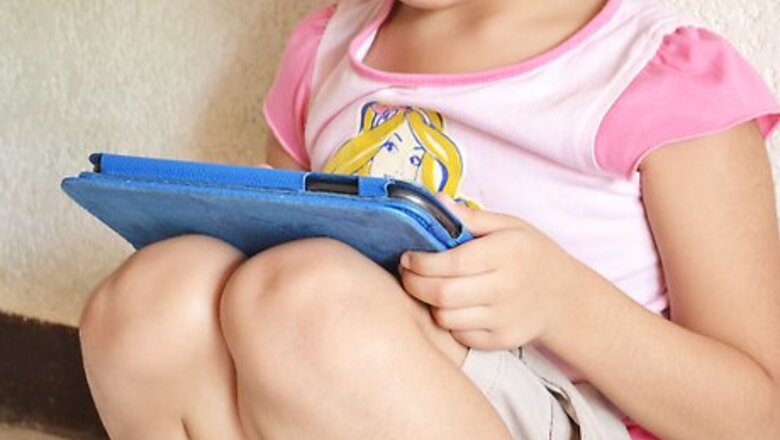
views
From compelling games and puzzles to books and movies, kids love the iPad just as much as (and sometimes even more than) adults do. If your child has started an intense love affair with your iPad and starts hoarding it in his or her room or simply growls every time you try to literally pull it out of their fingers, it’s time to throw down some rules and take back your iPad, thereby restoring some family sanity.
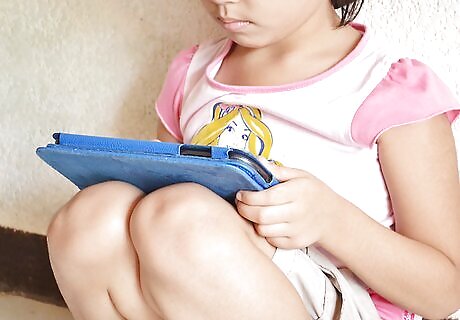
Realize your own role in this before going off the deep end. You've enabled your child to gain access to an amazing world of interactive joy and fun. Take responsibility for what you've done and keep calm. On the whole, this is about regaining household control over the use of an object, and should be approached with thoughtfulness and clarity. The iPad is an excellent educational tool when used properly. Part of your focus as a parent or guardian is to help your child use the iPad in this way, which will mean it is often a shared experience rather than one in which your child romps off and plays on the iPad alone. Are you prepared to put in the time to use it as a learning tool with your child?
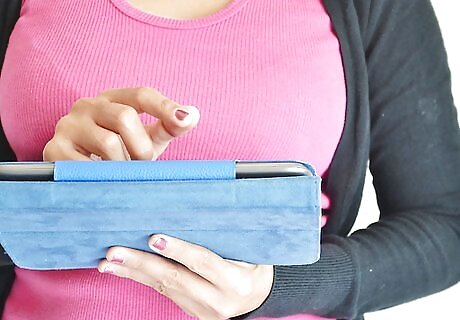
Show by example. If you're on the iPad constantly, it's going to be very hard for your child to understand why it's okay for you and not for him or her. If you're going to set out some house rules on iPad usage, you will need to be showing good restraint and reduced usage in front of your child, so that he or she can see this is fair. If you can't restrain yourself, you'll need to play on the iPad out of sight.
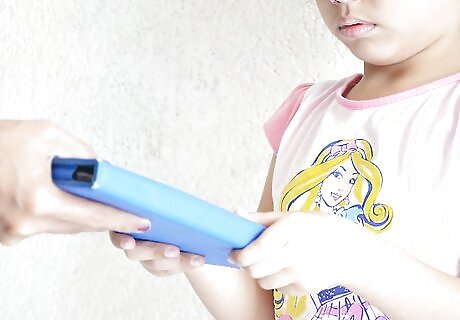
Begin by outlining specific rules of iPad use (and care) for every member of the household. If you allow usage to last on an unlimited basis and your child is allowed to carry it all over the house, you may experience pandemonium. From draining the battery to leaving it in odd spots like inside your child’s dollhouse or the bathroom, the iPad may end up getting mistreated. Wrangle down your child’s usage and institute specific rules that must be adhered to if he or she wants to play with it. And make it clear that everyone using the iPad is subject the same rules, not just your child. Some good rules to institute include: Designate a set play or usage place. Create boundaries as to where your child can play with the iPad. Do not allow your child to leave the pre-determined area with the iPad during play (it could be on the couch, in the kitchen or living room, for example). Exceptions to this can include when the whole family sits down to play on it (such as a dice game like Monopoly) or when you are actively educating your child using the iPad. Implement a battery charging rule. Is the battery always drained after the kids have had their fun with the iPad? Make it a rule that after every use, your child must put the iPad back on the charger to replenish the battery. Have a designated recharging spot, show your child how to insert the cord with care and check now and then that the iPad has been placed back there carefully. And be sure to have all household members do the same after using the iPad.
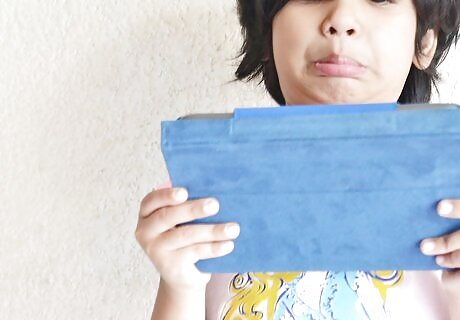
Determine when your child can use the iPad. Make homework and dinner times totally off limits (this means the same for you too, unless it's being used for the dinner recipe, which is a good excuse for getting it back from any other person using it). Also, immediately before bed may not be such a good idea unless you're reading a book to your child from the iPad (in which case, you're in control). A rousing game of Angry Birds while trying to fall asleep may wind your child up rather than soothe him or her to sleep.
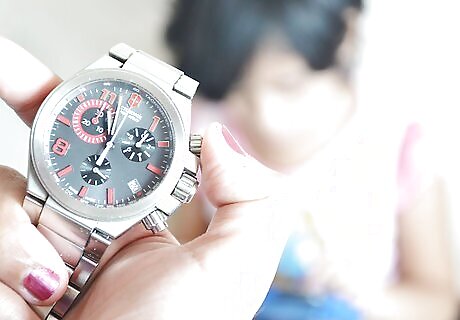
Time your child’s usage. Whether it’s a hard and fast rule, or you want to be flexible with the amount of time your child spends on the iPad, make sure you always know how long he or she is using it. One easy way to keep track of usage is to set the kitchen timer. The minute it rings, your child has to stop iPad time. If you have more than one child wanting to use it, you'll find the timing aspect will come naturally, and each child will tend to police time usage without too much intervention from you. Always set a time by which the iPad must be back in its recharging spot, regardless of whether or not your child used his or her allotted time. With so many electronic entertainment items in the house, from game consoles of all sizes, the TV and DVDs, to laptops and MP3 players, and now the iPad, your role as a parent is to ensure that your child isn't simply hopping from one electronic device onto another in succession. Be sure that reading, homework, outdoor play chores and other activities are also being attended to.
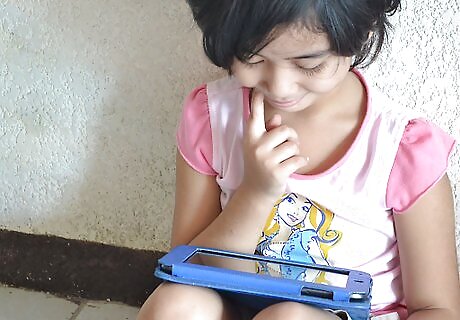
Specify what types of applications or books your child may use. If you find that a particular application is highly addictive (comprising more than 50% of use) and either mesmerizes your child or puts him or her in a foul mood, ban it from being used. Monitoring what types of apps are being used is also a smart decision in order to maintain a level of appropriateness. Do not allow your child to download anything by way of apps or internet items. Make this a firm and fast rule. If it is breached, delete the offending item, no matter how many levels your child has managed to gain in the meantime. Even though some items are free, you need to be strict to avoid inappropriate content being downloaded. And when it isn't free, it's your iTunes account getting drained if you've preloaded money. Also, say that if your child wants a new app, it’ll need an evaluation of the content and consent from you.
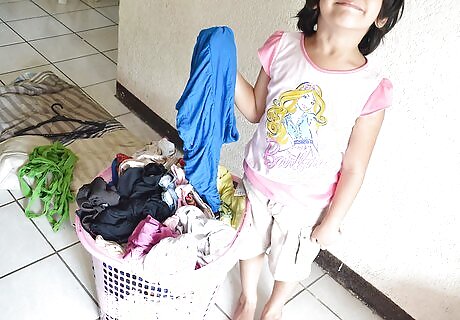
Consider making your child earn time with the iPad. Remember how much money that iPad cost? You had to earn the iPad and so should your child. Making him or her earn play time will increase the amount of respect the child has toward using it and also increases respect for you. Instead of just letting him or her use it at their whim, make your child earn it by doing chores, demonstrating kindness or excelling in school. If you want to allow him or her to use it on a regular basis, fine. But only let your child continue to use it as long as behavior, grades and chores (if applicable) are in check.
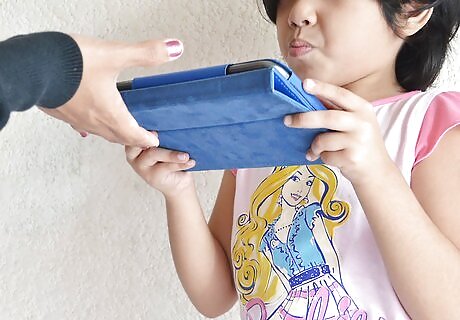
Use the iPad as leverage. Just like when you give the iPad, you can take it away. You can also use the iPad for negative reinforcement or as punishment for bad behavior or not listening. Let the child know that he or she may be reinstated with iPad privileges but only if the negative behavior/situation changes. Stand strong, even if he or she pitches the outrageously largest fit. Don’t give in until you see positive changes.
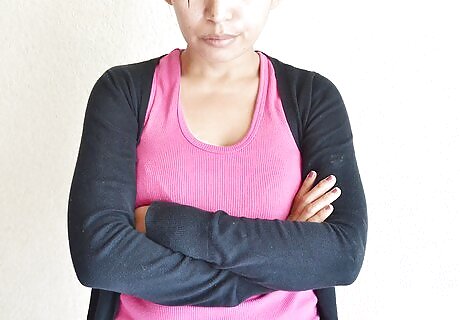
Throw down the gauntlet. If you need the iPad back immediately, institute tough love. It’s your iPad and he or she must return it immediately. Stand over your child; tell him or her that game is finished and that you would like it back right now. If your child resists, you will have to forcefully remove it from his or her really strong grip. In turn, ban further usage until your child has had a chance to think over his or her rudeness toward you and has apologized. Be careful when removing the iPad from the child’s clutches because if it falls on the floor, it could crack or break. If you experience resistance consider not allowing your child to use the iPad again. He or she must understand that using it is a privilege, one that may not return if the child can’t treat it as such.

Get another iPad. If you find that one iPad just isn't going around everyone who wants to use it in the family, consider saving up for another one. You could get the lowest end one with the least bells and whistles that can just be used for games for the whole family. However, all the rules about time usage, care of the iPad, and not overdoing it as outlined above will continue to apply. Moreover, the iPad shouldn't be used as a substitute for genuine play and learning experiences in the real world. It's not recommended to buy an iPad specifically for a child under school age. Your young child should be experiencing a huge range of sensory experiences that an iPad cannot provide. Toys and experiences should be varied and iPad usage should be minimal and preferably supervised. If you can't afford, or simply don't want, to get another iPad, consider spending more shared time on the iPad, doing family games, teaching each other things and using apps that encourage pair or group interaction. Even if you can afford another iPad, your family bonding and shared knowledge is likely to benefit from this approach enormously. Another good tip is if you can't afford an iPad and you want a second iPad for your child, get the second best thing which is an iPod Touch. An iPad and an iPod Touch do share the same features after all so your child probably won't mind getting an iPod Touch instead except that it is smaller in size.
















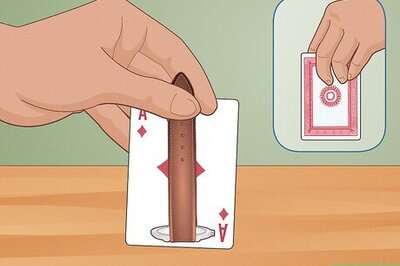
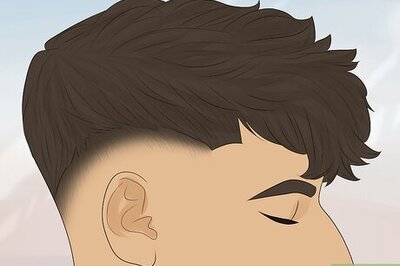
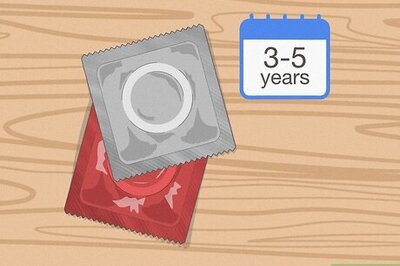
Comments
0 comment